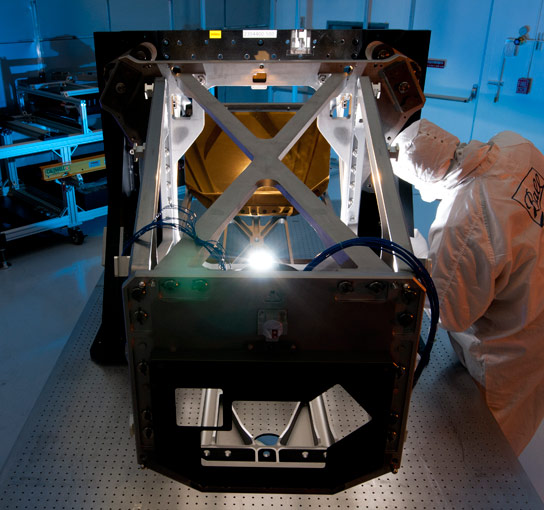
Ball Aerospace Technician Robin Russell inspects the Webb Telescope Aft Optics Subsystem during mirror integration activities. The Aft Optics bench, made of lightweight beryllium like the mirrors, holds Webb’s tertiary and fine steering mirrors. The installed, gold-coated tertiary mirror can be seen in the background. Credit: Ball Aerospace
The most powerful space telescope ever built, NASA’s James Webb Space Telescope is still on track for an October 2018 liftoff as it met another milestone recently. The Webb Telescope is a joint project between NASA, the European Space Agency, and the Canadian Space Agency and will be the successor to the Hubble Space Telescope.
Engineers working on NASA’s James Webb Space Telescope met another milestone recently when they completed performance testing on the observatory’s aft-optics subsystem at Ball Aerospace & Technologies Corp’s facilities in Boulder, Colorado. Ball is the principal subcontractor to Northrop Grumman for the optical technology and lightweight mirror system.
“Completing Aft Optics System performance testing is significant because it means all of the telescope’s mirror systems are ready for integration and testing,” said Lee Feinberg, NASA Optical Telescope Element Manager for the James Webb Space Telescope at the Goddard Space Flight Center in Greenbelt, Maryland.
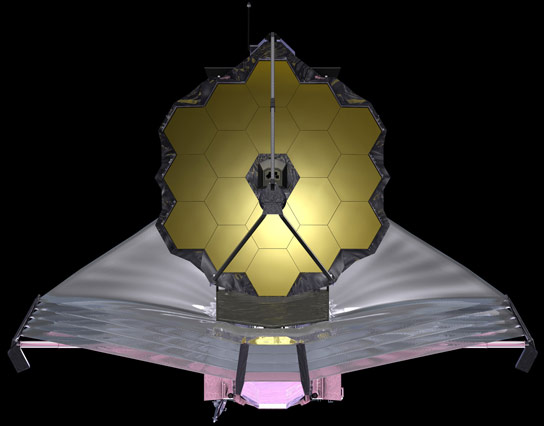
September 2009 artist conception of NASA’s James Webb Space Telescope. Credit: NASA
Since last May, the AOS has undergone a series of thermal, vibration, and cryogenic tests to demonstrate that it can withstand the rigorous vibration environment of the rocket launch and remain precisely aligned in order to function at the extremely cold temperatures in space. The AOS will remain at Ball Aerospace to be used in integrated testing with the flight actuator drive unit and AOS source plate assembly. The AOS is the final optical subsystem in the Webb’s Optical Telescope Element to complete integration and test activities at Ball Aerospace.
“Each optical element that Ball Aerospace builds for the Webb is extremely sophisticated,” said David L. Taylor, Ball Aerospace’s president and chief executive officer. “The successful completion of another milestone brings us one day closer to the launch of NASA’s next major space observatory.”
The AOS is a precision beryllium rectangular optical bench that houses the tertiary and the fine steering mirror installed at the center of Webb’s primary mirror. The AOS is surrounded by a shroud that eliminates stray light, and two large radiator panels that keep the assembly cold. This subsystem collects and focuses the light from the secondary mirror and feeds it into the science instruments.
In September 2012, Ball began the process of shipping the finished Webb primary mirrors to NASA Goddard. The remaining mirrors will arrive at Goddard in 2013, awaiting telescope integration in 2015. The Webb is on track for an October 2018 liftoff.
The James Webb Space Telescope is the world’s next-generation space observatory and successor to the Hubble Space Telescope. The most powerful space telescope ever built, Webb will observe the most distant objects in the universe, provide images of the very first galaxies ever formed and see unexplored planets around distant stars. The Webb Telescope is a joint project of NASA, the European Space Agency, and the Canadian Space Agency.



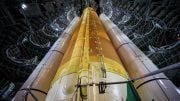
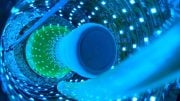
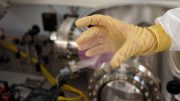

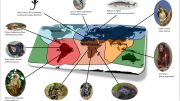

Be the first to comment on "NASA’s Webb Telescope Edges Closer to Liftoff"